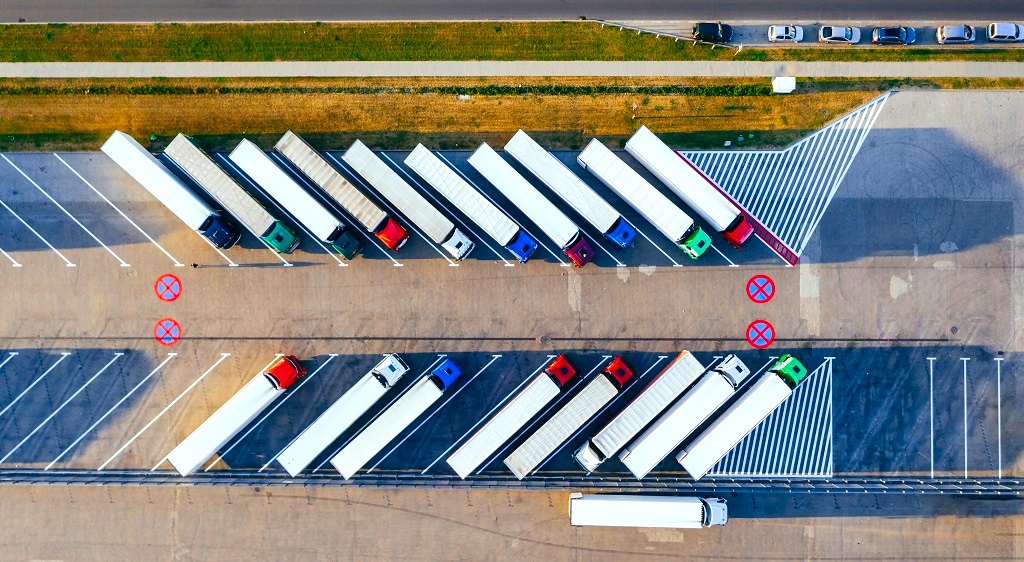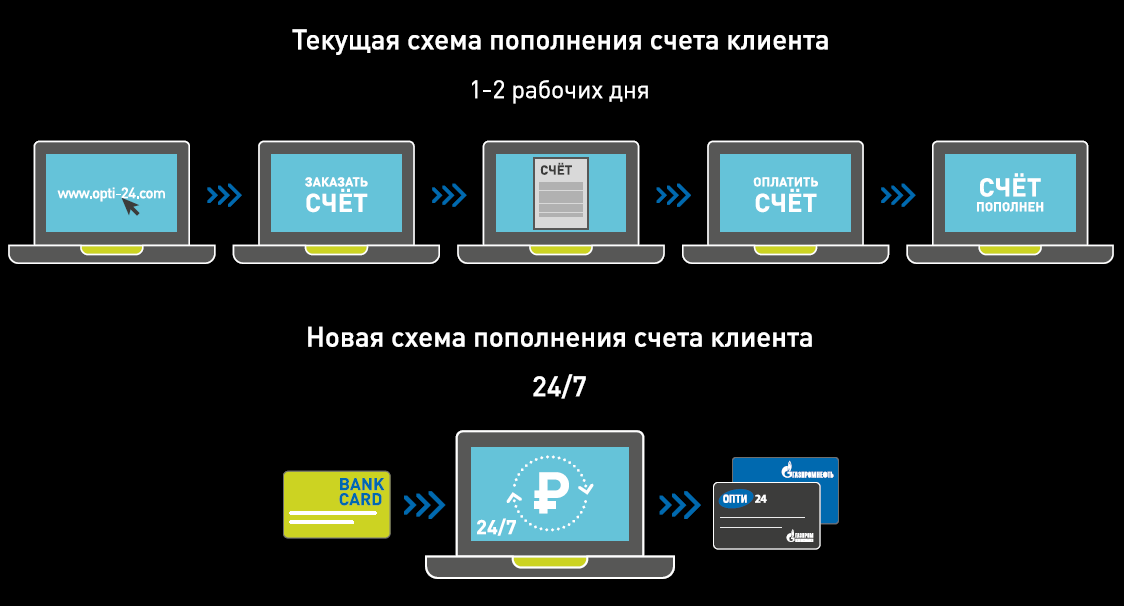
Unsplash / Photo: Marcin Jozwiak
Small educational program
We all went to the gas station and we know that refueling a car does not take much time. The process is simple - insert the gun into the tank and pay for gas / diesel at the checkout. In addition, each of us can relatively easily form our own “fuel budget” for a month, taking into account mileage and consumption. But in the case of legal entities, the situation is somewhat more complicated - they can have from one to several thousand cars in the fleet. The heads of organizations have to control the fuel costs of their drivers, accounting must keep records and regularly report to the tax service.
To simplify financial management for companies, we at Gazpromneft six years ago developed a personal account for corporate clients. Initially, it was possible to monitor the spending of drivers on fuel in it. But gradually the functionality of the personal account expanded, new services were introduced for holders of fuel and service cards - and a whole range of digital services became available to organizations.
The digital path of the corporate client
We are developing a range of digital services for corporate clients on the OPTI 24 platform. We want customers using these services to be able to solve most of their issues online at any convenient time. Therefore, we are working on building a “ digital customer path ”, simplifying the process of working with us as much as possible.
Clearly:

What services Gazpromneft's corporate clients already use are described below.
What services are already available to companies
The basis of the package of services for corporate clients is fuel-service cards . With their help, the drivers of the company purchase fuel and related products, pay for washing services, tire shops, car services from partners.
The company manager can manage these cards - set limits and monitor fuel consumption by drivers - in your account on the website . Also in your account you can find a detailed map of gas stations and technical stations with details of services, payment services of the Platon system, digital logistic (Course). "Course" helps to choose the optimal plan for refueling on the route based on the cost of fuel at the gas station. Even having one car, businessmen will feel the benefit - according to our calculations, the economic effect will be about 30 thousand rubles a year. And for large carriers with a fleet of several hundred cars, cost reduction can reach tens of millions of rubles a year.
Convenient features are also available in the mobile application . On a smartphone, you can view the card balance and evaluate the available limits for the purchase of fuel, quickly block or unblock the card, as well as find the nearest gas stations and car repair shops. The Android app has a virtual card.
The functionality of these services is supplemented by the API . With its help, Gazpromneft customers can organize regular export of transaction data on fuel and service cards to their own accounting systems. All data can also be transferred to the accounting systems of the client company (1C, SAP and others), which reduces the burden on accountants and eliminates the likelihood of errors during manual dialing.
How we seek ideas for new products
Our pool of digital services is regularly updated. Moreover, to determine which function needs to be added next, customers help us. The company's analysts monitor product reviews and conduct in-depth interviews with users. Most often, members of the development team and the owner of the product - the most interested in feedback - do all this work themselves, but can connect the research team.
Clients participate in contextual interviews at will. Depending on the objectives of the study, a company from a certain segment is involved. We send customers an invitation to test new services, after which they are the first to get access to their beta version.
We also conduct service design sessions - complex events for which participants prepare in advance: they study market trends, competitors' news, and discuss with colleagues in the regions possible directions for the development of new products. They put forward hypotheses and go to test them: they organize interviews with clients or conduct “field” studies at gas stations.
If the client’s response is positive, indeed, there is a pain that needs to be solved, then the participants of the research teams return to the office and work out a business model of the future solution, discuss it with stakeholders and offer product teams. Based on the feedback, we create a list of changes. For example, new services will appear in your account, first of all, solutions for paying for road infrastructure, or, for example, anti-fraud report, payment for city and highway parking lots, freight transport insurance, car evacuation.
One of the latest, very popular, innovations was the function of replenishing the account of a corporate agreement with a bank card.
One of the latest innovations: replenishment of an account with a bank card
Topping up an account for a legal entity is a multi-stage process that differs from the usual transfers from card to card between individuals. We tell you how it usually happens.
The accountant of the company (or another responsible person) must formulate the payment order in 1C, indicate in it the number of the agreement to which the funds are credited, sign and send the payment order to the bank. All these operations must be done on a working banking day, as payment orders are not processed on weekends and holidays.
Next, you need to wait until the payment is processed by the recipient bank and the recipient (in this case, Gazpromneft-Corporate Sales) - he needs to correctly “distribute” the money received on the payer agreement and take it into account in internal systems. As a result, a payment, which takes a few minutes from an individual, is stretched out for a legal entity for hours, and sometimes days.

We at Gazpromneft solved this problem and developed a new service that makes it possible to replenish the contract account using a regular bank card. If the company cannot transfer money by payment order (at night, on weekends or holidays), it is enough to make a transfer from a corporate or personal bank card. Money will be credited to the account at any convenient time, even at night. They can immediately be spent on the purchase of fuel or related products / services.
It would seem like a regular service, but this is only for you and me, refueling private cars at gas stations. However, everything is not so simple as it seems at first glance - under the hood of the service are many Gazpromneft systems at once.
How does it work technically
The general algorithm until the moment the money is credited to the client’s account can be described as follows:
- The client logs in to his personal account and selects the number of the agreement for replenishment.
- From your personal account, data on the payment, counterparty and the amount of payment are transmitted to the acquiring bank, and the payment results are recorded in our CRM system.
- If the payment is successful, the CRM system sends this information to the fiscal data operator to store and transfer fiscal data to the Federal Tax Service, as well as to generate an electronic check and send it to the client. The same information enters our 1C-system, which is responsible for commercial accounting.
- 1C sends the payment information to the processing, and the client sees the deposit to the fuel account in online mode.
On the next business day (this is due to the features of the banking system), when the bank sends us the money transferred by customers from the cards, we also receive a register that shows all the data about the payment and the counterparty: TIN, name, number of the replenished agreement, and so on . After downloading this registry to the 1C system, a reconciliation with payments made with a credit card on the previous day is automatically performed, and a mark is made on successful reconciliation.
How was the development process
We began to implement the function of replenishing the contract account with a bank card in October 2018. It took about six months to create the service. One of the most difficult tasks was to synchronize the work of all development teams, because changes were required in a large number of systems: from a personal account, to integration with 1C and transferring information to the fiscal data operator. In total, about 40 specialists took part in the project - from Moscow, Yekaterinburg, St. Petersburg, Yaroslavl and other cities.
The front end of the card agreement payment service is built on the Vue.js framework, the backend is on Laravel. Some developers were engaged in the integration of new functionality in Oracle Siebel CRM and 1C - work with different systems was carried out in parallel.
In order to comply with the requirements of federal law 54-FZ “On the use of cash registers”, we decided to connect an online cash register, despite some doubts at the beginning of the project.
Who uses the service
We launched the replenishment service with a bank card in March 2019. They did not expect that it would replace the already usual procedure for replenishing an account with the help of payment orders. Bank cards were supposed to be an alternative way of crediting funds in cases where the working banking day ended (or did not start) and the “standard” transfer could not be completed on time.

Unsplash / Photo: Christian Chen
And so it happened - mostly carriers use the service on Fridays after 16 hours to ensure the availability of funds in the fuel account on weekends. The service turned out to be quite popular at night as well, for example, by the owners of bakeries who replenish the account from the card at 3-4 a.m. so that their drivers have the opportunity to refuel and distribute products before the outlets start working.
Now about 1% of all payments that come from our customers account for a bank card. And the number of service users is gradually growing - from three to five new companies are connected every day. In general, based on feedback and statistics, we can conclude that Gazprom Neft corporate customers are less likely to encounter the problem of a “blocked” contract due to a lack of money on the balance sheet. Now they don’t have to worry that their business will “get up” along with vehicles.
About our other digital projects with young Russian startups: